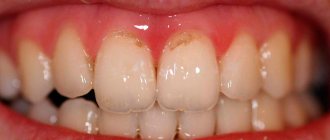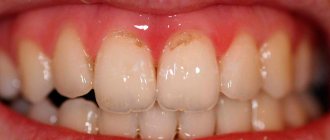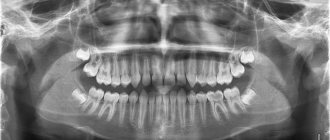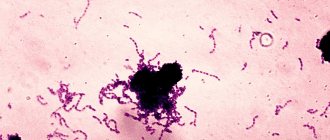According to statistics, 98% of people are afraid of visits to the dentist. As a result, solutions to dental problems are postponed until the last minute, until one day we discover that the tooth has rotted. Then a visit to the doctor is inevitable, but a lot of work remains.
Contrary to popular belief, rotten teeth are not only a result of poor hygiene.
Causes of tooth decay
Yes, we all know that you need to brush your teeth 2 times a day, be sure to use dental floss and visit the dentist 2 times a year. Many patients follow these recommendations, but their teeth still deteriorate and rot. Poor hygiene is not the only reason why teeth deteriorate. There are other factors:
- Gum diseases
provoke the proliferation of bacteria, which literally gnaw through the enamel and destroy tooth tissue; - genetics
plays a role in the ability of teeth to resist pathogenic factors; - an unfavorable ecological environment
leads to the fact that in industrial areas there are more dental problems than in places where there are no factories; - Water quality
directly affects teeth. Low content of useful minerals (fluorine, calcium), high content of heavy metal salts can destroy teeth, despite hygiene; - bad habits
. Smokers have worse teeth than non-smokers and treatment is more difficult; - general diseases
, for example, problems with the gastrointestinal tract, negatively affect the condition of the teeth; - carbohydrates
in the diet , as well as hard food products that injure the gums and enamel lead to tooth decay.
To understand why teeth rot, you need to undergo an examination. Don’t be surprised if the doctor asks you to take tests or do an ultrasound. Dental treatment requires a comprehensive approach and diagnosis is more important than ever. Having found out why teeth are rotting, the doctor will prescribe adequate treatment.
How does a tooth rot?
Recognizing that dental tissue is susceptible to rotting is not so difficult. There are a number of pronounced symptoms that indicate this:
- A bad odor appears from the mouth.
- The color of the tooth does not change for the better; it begins to darken.
- Holes appear on the tooth. When food, cold or hot liquids get into them, acute, sometimes unbearable pain is observed.
- In the most advanced cases, loosening of the unit is observed.
If you experience at least one of the above signs, you need to urgently go to the dentist, otherwise you may lose a tooth. Remember that having a rotten tooth is not only an aesthetic drawback. This can lead to other health problems.
Stages
Caries, like a secret agent, begins to act on the sly and may not make itself felt for years. Its initial stage is called the “white spot stage.” Well, how can you see white on white? That is why it is important to visit the dentist regularly - the specialist will highlight the white spot against the background of the enamel and cure caries in time. And if you start it, the disease goes to the next level:
- Surface.
The enamel is still intact, but in the area of the stain it becomes rough. The stain deepens. The tooth begins to react to cold and hot. - Average.
Caries penetrates to the dentin, but it does not provide access to the pulp. A damaged tooth reacts to temperature, mechanical, and chemical stimuli. But the pain is not constant, it goes away quickly. - Deep.
The pain is sharp when touched, but gradually subsides. A carious cavity is visible to the naked eye.
Symptoms of tooth root caries
Ordinary caries goes through four stages of development: initial, superficial, middle and deep. A person notices the first signs already at the second stage of the disease, when increased sensitivity of the enamel appears after eating sweet foods. However, tooth root caries occurs in a hidden form. Symptoms appear only when the lesion reaches a large size and the dental nerve is exposed. The carious cavity becomes so extensive that it becomes visible to the naked eye. It is localized near the gum and under it.
At this stage, there are many disturbing symptoms:
- Acute pain when cold, hot, sweet or sour food hits the nerve.
- Severe pain when the tooth is exposed to chemical irritants: rinses, medications, toothpastes.
- Gum hypersensitivity. Discomfort while chewing food, bleeding.
- Tooth displacement to the side, loosening, especially after eating.
- Inflammation of nearby soft tissues, dark plaque appears on the lower part of the dentition.
- Bad breath, which is almost impossible to eliminate with the help of pastes, rinses and chewing gum with a refreshing effect.
At first, pain only occurs during eating, but as the pathology develops, the pain becomes constant. Even strong analgesics do not help eliminate it.
Why do children's teeth rot?
In children, the composition of saliva is not the same as in adults. Its antibacterial properties are low; in a warm, humid environment, microbes multiply quickly. The disease is not only common, it progresses rapidly. Caries spreads in width and depth. Single events are rare; usually several teeth are affected at once. For children, timely identification and treatment of problem teeth is of particular importance. Rotten teeth can cause:
- pulpitis and periodontitis;
- malocclusion;
- loss of milk and permanent teeth;
- inflammation of the maxillofacial apparatus.
Bad teeth affect the social adaptation of children and lead to psychological problems.
Prevention includes hygiene procedures, limiting sweets, a balanced diet and regular dental examinations.
Why is this happening?
The main reason for this problem is poor hygiene, lack of timely dental treatment and neglect of preventive dental examinations. In 90% of cases, it is these factors that cause tooth decay. There are also indirect reasons that can affect this process:
- Having bad habits, especially smoking.
- Hereditary predisposition.
- Bad ecology.
- Poor nutrition.
- Concomitant diseases of the oral cavity.
- Poor quality drinking water.
Teeth and pregnancy
We found out why children's teeth rot. There is another group of people particularly at risk of tooth decay. These are pregnant women. Some scientists classify pregnancy as an immunodeficiency state - the body's resistance to pathogens decreases to such an extent. It’s no wonder that during pregnancy, general diseases worsen and dental problems begin. The increased content of hormones in the body reduces the barrier ability of the epithelium, microorganisms more easily penetrate the gums and begin to multiply.
Help protect your teeth:
- rational and balanced diet;
- multivitamin complexes;
- professional oral hygiene;
- herbal baths;
- applications with calcium and phosphates.
First aid for fever and toothache
You should make an appointment with a doctor as soon as possible - any pre-medical care is aimed only at eliminating the symptoms, and only a dentist can perform the cause and correct diagnosis. The reasons can be very different - damage to dental tissue, inflammation of the gums, neuralgia and others.
- How to deal with unpleasant odors in the home of a seriously ill person
It is better to call an ambulance if the temperature rises above 39 degrees
It is especially critical to visit a doctor as quickly as possible if symptoms persist for longer than a day - the temperature may be due to the fact that the infection is in the blood, and this is fraught with serious complications. If weakness and poor health do not allow you to get to the dentist on your own, and the temperature rises above 39 degrees, it is better to call emergency help.
What to do if a tooth is rotten
Until recently, the only solution to the problem was deletion. Today, dental science offers various methods and techniques for restoring teeth.
The method of influence depends on the specific case. What matters is the depth of the lesion, its area, the stage of the disease and the degree of destruction.
Treatment at the initial stage
At the stain stage, you can do without a drill, because it is this that frightens you the most and makes you put off visiting a doctor.
Apply:
- Ozone therapy
. Ozone treatment destroys bacteria, and special preparations restore enamel. - The laser
also destroys bacteria, without heating the tissue and serves as a good preventive measure for gum disease. - Infiltration treatment
.
The chemical composition destroys bacteria, and the infiltration material “seals” the enamel pores and prevents pathogens from penetrating inside.
Treatment for moderate and severe stages
If the disease is advanced, the dentist will still try to save the tooth. At the same time, you can no longer do without a drill. After the examination, the doctor decides how to treat the decayed tooth. But the general principles are the same: after the administration of anesthesia, all dead tissue is removed, the cavity is disinfected and a filling is placed.
If the crown of a tooth has rotted, but the root has been preserved, after treatment the tooth is prepared for prosthetics using:
- Inlays under the stump.
They replace damaged tooth tissue. Inlays are made from zirconium, ceramics, and precious metals. One part of the tab is inserted into the dental canal, and a crown is put on the other. - Pins.
A pin is a rod that is inserted into the dental canal, and a crown is installed on top. They are made of metal or fiberglass.
Modern prosthetics offer a huge variety of materials. Crowns are made from traditional materials: metals and metal-ceramics, composites, zirconium alloys, and modern metal-free compounds.
Drug treatment of tooth root caries
At the first stage of dental caries, demineralization of the enamel occurs. At the roots, the tissues are protected not by enamel, but by a cement surface. It also consists of minerals. To restore the natural protection of the tooth, the doctor carries out remineralization by applying gels or pastes with a large number of microelements to the root. At this stage it is possible to restore the structure of the cement. In addition, during the medical treatment of root caries, antiseptic tissue treatment is performed to destroy cariogenic microorganisms.
Remineralization is carried out in the dentist's office over several procedures. Your doctor may also prescribe medicated toothpaste for use at home. You must follow all the specialist’s recommendations for the treatment to be successful. If the patient continues to eat sweets and neglect hygiene rules, the therapy will not bring results.
Implantation is a solution for advanced cases
Alas, if the root of a tooth has rotted, then the only solution is removal. But even here, dentists offer a method that will help restore a rotten tooth - implantation. The implant will stop bone loss, prevent loosening and tilting of neighboring teeth, and restore your smile. The immediate loading method involves placing an implant immediately after tooth extraction. There is no need to wait for the hole to heal and you can chew almost immediately.
Surgical treatment of tooth root caries
Treatment is often complicated by gum disease. Inflammation of soft tissues is an obstacle to the filling procedure or tooth root removal. In such cases, plastic surgery or gum excision is required. Only after this a temporary filling is installed. When the tissue is completely restored, the doctor performs a permanent filling.
During the treatment of dental roots, a rubber dam is used - a latex plate that allows you to isolate one or more teeth from the area that is affected by the carious process.
In general, the procedure is carried out according to the standard algorithm:
- Application of anesthesia. It is impossible to do without an anesthetic drug during such an operation, because the root and basal areas are most sensitive to external influences.
- Cleaning the carious cavity from necrotic tissue. The doctor uses a drill to excise damaged areas of the tooth to prepare the cavity for filling.
- Treating the tooth with an antiseptic solution. If you apply a filling without disinfection, caries will begin to develop underneath it.
- Filling. Compomer materials that are placed on the root of the tooth are most resistant to the effects of saliva. In addition, they are the most wear-resistant and durable. They contain fluorides, which restore root cement and promote rapid tissue healing.
Tooth root caries develops more often in older people, who, as a rule, have crowns, dentures and other structures in the oral cavity. If they were installed incorrectly or worn out, they must be replaced with new ones. They must exactly match the bite, otherwise the likelihood of recurrent caries increases significantly.
Is it possible to cure a rotting tooth?
If a diseased tooth has not completely rotted, consulting a doctor will help save it. To understand whether it can be treated, an x-ray examination is prescribed, the results of which will determine the cause of the development of the rotting process. The method of treatment is determined taking into account the factor that provoked tooth decay.
Modern dentistry has a large number of tooth-preserving techniques, the main types of which are divided into conservative and conservative-surgical. In the first case, preservation of the destroyed unit does not require surgical intervention; root restoration is carried out using restoration, during which pin structures, inlays or coronal elements are used.
If there is inflammation at the apex of the tooth root, then a conservative surgical method of tooth preservation is used. Its resection is performed after preliminary filling of the canals. This procedure is simple, in most cases it is performed under local anesthesia and lasts no more than half an hour.
In certain situations, when the apex or base of a tooth root becomes inflamed, it is possible to do without surgical intervention. An anti-inflammatory drug is injected into the tooth canal for a period of 2-3 months to 1-2 years, which allows you to restore the bone tissue surrounding the tip of the tooth root.
How to relieve pain at home
With moderate syndrome, you can cope with pain using traditional recipes.
- Rinsing with a soda-salt solution will help alleviate the condition; decoctions of medicinal plants: oak root, sage, chamomile, calendula.
- A paste of garlic and onion or a piece of propolis is applied to the diseased tooth.
- The submandibular area on the sore side is massaged for one and a half minutes.
For disinfection, rinsing with the antiseptics chlorhexidine and miramistin is recommended. In order not to endure severe pain while visiting the dentist, you can take medical anti-inflammatory and painkillers: aspirin, analgin, Ketanov, Nurofen; treat the problem area with Dentcos and Kamistad gels.
Important! You should not heat the affected area (this will increase inflammation), or use painkillers for a long time without a doctor’s prescription. All of the above measures will help temporarily relieve pain, but will not stop the process.
Radical way - removal
Removal of a rotten tooth root is carried out in cases where none of the tooth-preserving techniques can be used. It will not be possible to avoid removing a rotten tooth root if you have:
- complex fractures of a dental unit;
- acute inflammation of the tissues surrounding the rotting root;
- destruction of part of the tooth crown located significantly below the gum level;
- tooth root mobility of the third degree;
- abnormal location of the affected unit.











